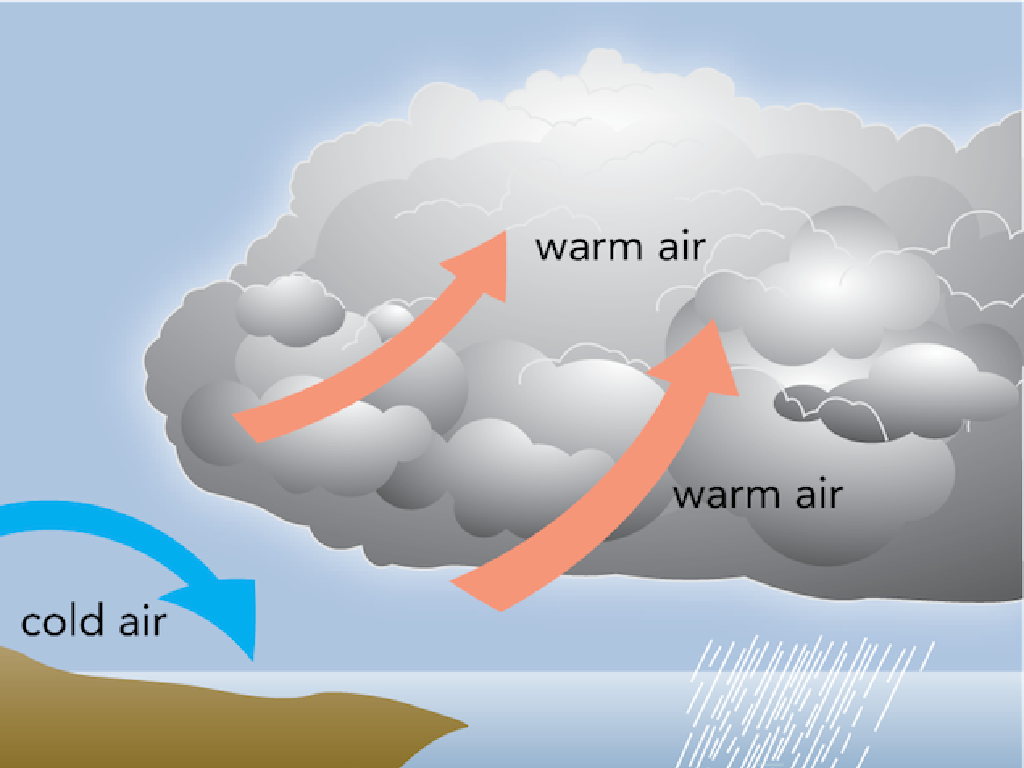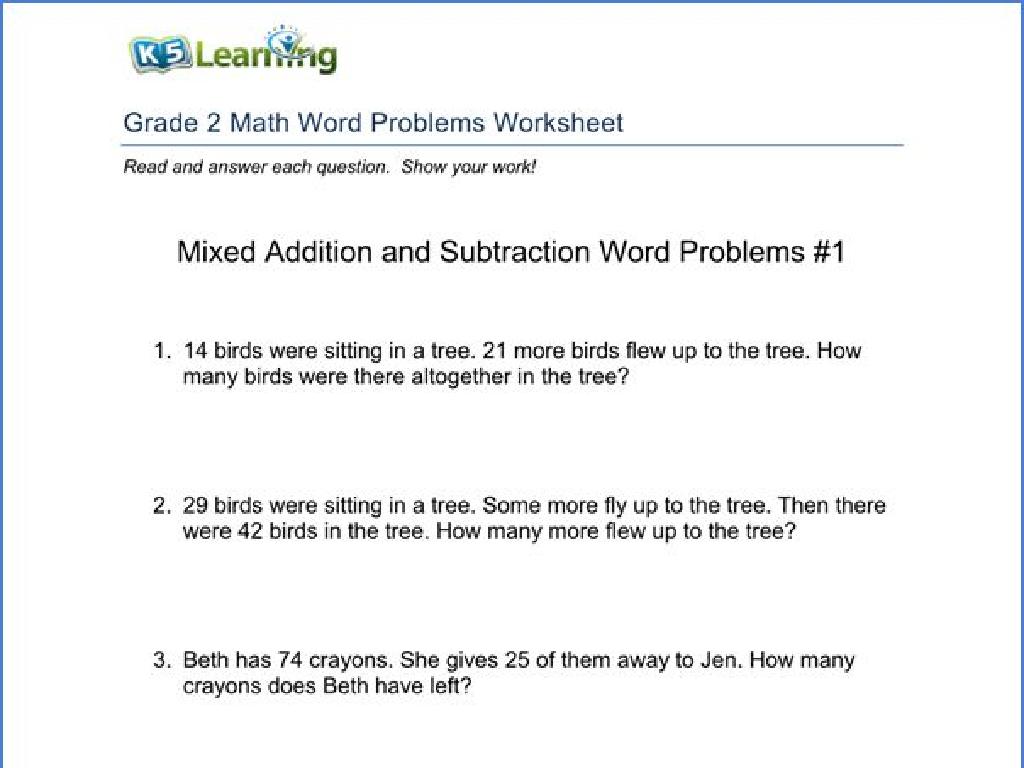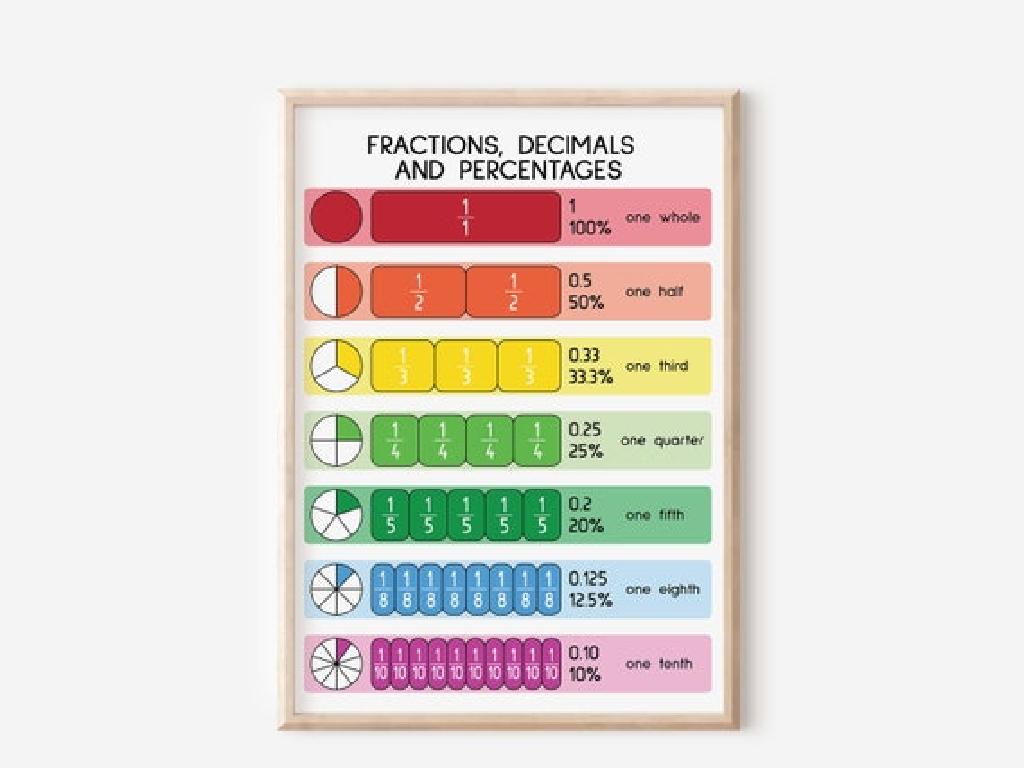Identify Trapezoids
Subject: Math
Grade: Seventh grade
Topic: Two-Dimensional Figures
Please LOG IN to download the presentation. Access is available to registered users only.
View More Content
Identifying Trapezoids in 2D Shapes
– What is a trapezoid?
– A quadrilateral with at least one pair of parallel sides
– Characteristics of trapezoids
– Non-parallel sides are called legs; parallel sides are bases
– Trapezoids in the real world
– Examples: bridges, tables, and kites
– Importance of learning shapes
|
This slide introduces students to trapezoids, a specific type of two-dimensional figure. Begin by defining a trapezoid and discussing its key characteristics, such as having a pair of parallel sides. Show visual examples of trapezoids and point out the parallel and non-parallel sides. Discuss how trapezoids appear in everyday objects and structures, helping students recognize these shapes in the real world. Emphasize the importance of understanding different shapes to develop spatial awareness, problem-solving skills, and the ability to recognize patterns in the environment. Encourage students to find and bring in pictures of trapezoids they find in their daily lives for the next class.
What is a Trapezoid?
– Definition of a trapezoid
– A quadrilateral with at least one pair of parallel sides
– Characteristics of trapezoids
– Non-parallel sides are called legs; parallel sides are bases
– Real-world trapezoid examples
– Bridges, tables, and kites often have trapezoid shapes
– Understanding trapezoid properties
|
Begin the lesson by defining a trapezoid as a four-sided figure with at least one pair of parallel sides. Highlight the characteristics of trapezoids, such as the names of the sides (legs and bases) and the fact that the angles on the same side of a leg are supplementary. Provide real-world examples where trapezoids are evident, such as in the design of certain bridges, tables, or kites, to help students recognize these shapes in their environment. Discuss the properties of trapezoids, including how to calculate area and the conditions for a trapezoid to be isosceles. Encourage students to bring in pictures or examples of trapezoids they find for the next class to foster engagement.
Properties of Trapezoids
– One pair of parallel sides
– A trapezoid has a minimum of two sides parallel
– Non-parallel sides are legs
– The other two sides that aren’t parallel are referred to as legs
– Angles next to each base
– Look at the angles that share a side with the base
– Trapezoids in geometry
– Understand how trapezoids fit into the family of quadrilaterals
|
This slide aims to familiarize students with the fundamental properties that define a trapezoid. Emphasize that a trapezoid is unique because it only requires one pair of parallel sides, unlike other quadrilaterals that may have two pairs. The non-parallel sides, or legs, can be of different lengths, which distinguishes trapezoids from parallelograms. Discuss how the angles adjacent to the base can vary and are not necessarily equal. Use diagrams to illustrate these properties and provide examples of trapezoids in both geometric and real-world contexts. Encourage students to identify trapezoids by looking for these key properties.
Types of Trapezoids
– Isosceles trapezoid properties
– Two sides are equal in length, and base angles are equal
– Right-angled trapezoid properties
– Has one right angle between base and leg
– Scalene trapezoid properties
– No sides or angles are equal
|
This slide aims to help students identify and differentiate between the various types of trapezoids. An isosceles trapezoid has a pair of opposite sides that are equal in length and two base angles that are equal. A right-angled trapezoid, as the name suggests, includes a right angle between the base and one of the non-parallel sides, or legs. A scalene trapezoid does not have any sides or angles that are the same. Encourage students to draw each type and measure the sides and angles to reinforce their understanding. Provide examples of each trapezoid type and ask students to classify them based on their properties. This will help solidify their comprehension of the geometric concepts.
Identifying Trapezoids
– Traits of a trapezoid
– A trapezoid has one pair of parallel sides
– Practice with various quadrilaterals
– Compare trapezoids to squares, rectangles, and parallelograms
– Group discussion activity
– Discuss the unique properties of trapezoids
– Key identification tips
– Look for at least one pair of parallel sides
|
This slide is aimed at helping students distinguish trapezoids from other quadrilaterals. Start by defining a trapezoid, emphasizing its one pair of parallel sides, which is the key feature that sets it apart. Provide practice examples where students identify trapezoids among a mix of quadrilaterals, reinforcing their understanding through repetition. Facilitate a group discussion to allow students to articulate the identifying features of trapezoids and share strategies. Conclude with tips to quickly identify trapezoids, such as looking for only one pair of parallel sides, which is a contrast to parallelograms that have two. The activity in the class should involve students working in small groups to identify trapezoids from a set of various quadrilaterals and explaining their reasoning to the class.
Trapezoids Around Us
– Spot trapezoids in our classroom
– Look around; desks, bookshelves may be trapezoidal
– Find trapezoids in everyday life
– Bridges, handbags, and kites often have trapezoid shapes
– Discuss trapezoids’ real-life applications
– From architecture to design, trapezoids are everywhere
– Understand trapezoids’ importance
|
This slide aims to help students identify trapezoids in their immediate environment and understand their significance in the real world. Start by asking students to look around the classroom for any objects that may have a trapezoidal shape. Then, encourage them to think about where they might have seen trapezoids outside of school, such as in buildings, furniture, or even road signs. Discuss how recognizing these shapes is not just a mathematical exercise but also a skill that can help them appreciate the geometry in everyday life. Emphasize the practical applications of trapezoids in various fields, including engineering, art, and design. This will help students see the value in learning about geometric shapes beyond the classroom.
Class Activity: Create Your Trapezoid!
– Gather materials for crafting
– Follow instructions to make a trapezoid
Use ruler to measure sides ensuring two are parallel
– Share your trapezoid with the class
– Discuss the properties of trapezoids
Compare shapes, angles, and parallel sides
|
This hands-on activity is designed to help students identify trapezoids by creating one. Provide students with colored paper, scissors, a ruler, and glue. They will use the ruler to measure and ensure that at least one pair of opposite sides are parallel, which is a defining characteristic of trapezoids. Once the students have created their trapezoids, they will share their creations with the class and discuss the properties of what makes a trapezoid, such as having only one pair of parallel sides, compared to other quadrilaterals. This activity will reinforce their understanding of two-dimensional figures and allow them to recognize trapezoids in various contexts and orientations.
Homework and Wrap-up: Trapezoid Identification
– Complete identification worksheet
– Finish the worksheet on identifying trapezoids.
– Study ‘Properties of Trapezoids’
– Read ahead about sides, angles, and symmetry.
– Review today’s lesson
– Go over notes and ensure understanding of trapezoids.
– Prepare questions for next class
– Think of any confusion or curiosity points to discuss.
|
As a wrap-up, assign students the trapezoid identification worksheet to reinforce today’s learning. Encourage them to prepare for the next class by reading about the properties of trapezoids, which will delve into sides, angles, and symmetry. Remind students to review the material covered today to solidify their understanding of how to identify trapezoids. Lastly, prompt them to come to the next class with questions or points of discussion, fostering an interactive learning environment. This will help address any uncertainties and encourage curiosity in the subject matter.





